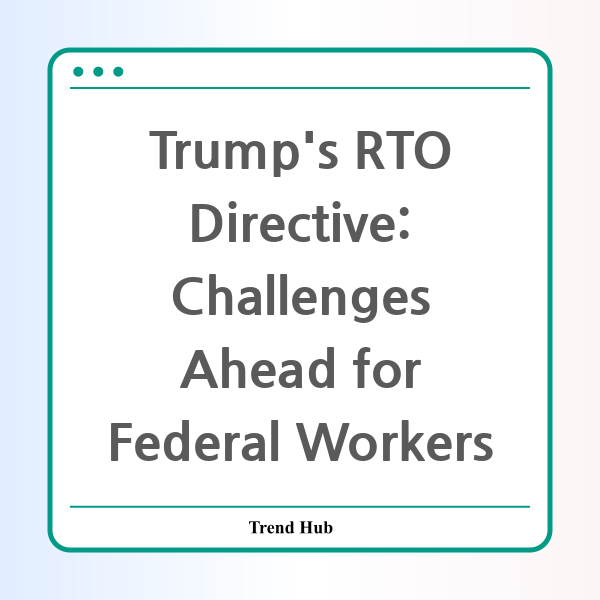* This website participates in the Amazon Affiliate Program and earns from qualifying purchases.

Are federal workers ready to return to the office full-time? In a recent memorandum, President Trump has mandated a full return to in-person work for federal employees, a move that poses significant challenges amidst changing workforce dynamics.
As many organizations have discovered during the pandemic, a flexible work arrangement is highly desirable for employees. As of fiscal year 2023, around 43% of civilian federal workers were already using telework either regularly or situationally. This trend raises questions about how effective the new directive will be in practice.
Trump’s memorandum requires heads of departments and agencies to take immediate action to end remote work arrangements and ensure a full-time presence in offices. However, there are several complexities involved in implementing this order, and the anticipated difficulties could impact the federal workforce significantly.
Understanding the Implications of the Directive
The memo's language specifies remote work rather than mixed telework arrangements, leading to confusion about whether it applies to both groups of employees. However, new guidance from the Office of Personnel Management (OPM) suggests a broader impact, indicating that revisions to telework policies should ensure all eligible employees work full time at their duty stations.
This mandate means that employees currently working remotely either need to find a local office or may have to relocate. These logistical changes could impose additional costs on federal agencies, including:
- Increased Travel Costs: Employees commuting to new offices may qualify for transit subsidies or even temporary duty pay if their commute exceeds 50 miles.
- Higher Pay Adjustments: Relocations to areas with a higher cost of living, like Washington, D.C., would necessitate pay adjustments—potentially causing dissatisfaction among workers.
- Hiring Costs: If skilled employees choose to leave rather than comply with the RTO mandate, agencies may face increased costs to recruit and train replacements.
Legal and Contractual Challenges
This blanket return-to-office order may also conflict with existing contractual obligations established with labor unions. Many employees have hybrid work arrangements negotiated into their contracts, and attempts to override these agreements could result in legal disputes.
The federal government must tread carefully to not only follow the new directive but also maintain employee morale. Studies have shown that flexible work options play a crucial role in attracting and retaining talent, especially in competitive fields such as technology where the demand for skilled labor is high.
The Broader Impact on Federal Workforce Dynamics
Federal agencies are already confronting challenges in talent acquisition, with a significant age disparity among the workforce. There are many more retirement-eligible workers than younger ones ready to step into those roles. High employee satisfaction and retention are vital for preserving institutional knowledge, which could be at risk with enforced office returns.
Research indicates that remote work can boost productivity, job satisfaction, and retention rates, all of which are critical as federal agencies seek to modernize and attract younger talent. For instance, findings suggest that workers given the option to telework do not suffer a decline in performance, contradicting the common belief that productivity decreases without oversight.
Conclusion: Navigating Uncertain Waters
The challenges posed by Trump’s directive to transition all federal workers back to the office are profound. As agencies grapple with the ramifications of this order, they must consider the practical, financial, and legal complexities involved in enforcing such a mandate. The balance between enforcing workplace requirements and supporting employee welfare may determine the long-term success of this initiative. It remains essential for federal agencies to adapt and innovate to meet the evolving needs of their workforce while navigating these challenges effectively.
* This website participates in the Amazon Affiliate Program and earns from qualifying purchases.